Solar Power Plant Design Fundamentals: A Clear Guide
Category: Renewable Energy
Understanding Solar Power Plant Design Fundamentals
Whether you’re an electrical engineer diving deeper into renewable energy or a curious beginner eager to grasp how solar power plants work, this guide delivers clear and thorough insights. You likely arrived here wondering about the essential elements that determine the effectiveness, efficiency, and innovation behind solar power plant design. Perhaps you’re grappling with questions about site selection, component selection, or system integration—crucial aspects that can overwhelm without the right framework.
This article cuts through complex jargon to bridge theory and practical application. We focus on foundational science, innovative technologies, and critical design considerations shaping modern solar plants. Unlike fragmented resources or overly technical papers, our post balances beginner-friendly explanations with in-depth engineering perspectives. By the end, you’ll have a comprehensive roadmap to solar plant design, helping you make informed decisions, whether designing a system, choosing components, or simply broadening your renewable energy knowledge. Keep reading to discover how science and innovation empower solar power generation like never before.
- Understanding Solar Power Plant Design Fundamentals
- Overview of Solar Power Plant Types and Applications
- Site Assessment and Solar Resource Analysis
- Key Components of Solar Power Plants
- Electrical Design and System Configuration
- Energy Yield Estimation and Performance Modeling
- Innovations in Solar Plant Design
- Environmental and Regulatory Considerations
- Construction, Operation, and Maintenance Best Practices
Overview of Solar Power Plant Types and Applications
Solar power plants come in several configurations, each tailored to specific energy demands, site conditions, and technological capabilities. Understanding the differences between utility-scale photovoltaic (PV) systems, concentrated solar power (CSP) plants, and hybrid solar systems is crucial for selecting the optimal design that balances performance, cost, and environmental impact.
Utility-Scale Photovoltaic (PV) Systems
Utility-scale PV plants dominate the solar energy market due to their scalability, modular design, and rapidly declining costs. These installations consist of thousands to millions of solar panels arranged in large arrays, converting sunlight directly into electricity via the photovoltaic effect. Common applications include feeding power grids in urban and rural areas, supporting industrial power needs, and enabling community solar programs. Key characteristics include:
- Direct DC to AC conversion: Using inverters to supply grid-compatible alternating current.
- Flexible location: Can be deployed on open land, rooftops, or even floating platforms.
- Rapid deployment: Modular construction allows for phased capacity increases.
- Low operational complexity: Minimal moving parts reduce maintenance needs.
Concentrated Solar Power (CSP) Plants
CSP systems generate electricity by concentrating sunlight to produce heat, which drives conventional steam turbines. This thermal approach allows CSP plants to incorporate thermal energy storage, enabling electricity production even when the sun isn’t shining—an advantage over traditional PV. CSP technologies include parabolic troughs, solar power towers, and dish Stirling systems. Typical CSP applications are large-scale power generation in regions with high direct normal irradiance (DNI), such as deserts. Important features of CSP include:
- Thermal energy storage capability: Extends power dispatchability.
- High solar-to-electric efficiency: Especially in direct sunlight conditions.
- Complex infrastructure: Requires precise optical components and heat transfer systems.
- Suitable for grid baseload power: Providing stable, predictable output.
Hybrid Solar Systems
Hybrid solar power plants integrate PV and CSP or combine solar energy with other renewable or conventional sources, such as wind or natural gas. These systems optimize overall plant performance by leveraging complementary technologies. For instance, PV panels supply immediate electricity during daylight hours, while CSP’s thermal storage can smooth output fluctuations. Hybrid setups find increasing use where grid stability and reliability are priorities, including:
- Microgrids and remote locations: Providing consistent power supply.
- Industrial cogeneration: Combining heat and power generation.
- Grid support services: Enhancing flexibility and power quality.
By grasping the technological distinctions and application niches of these solar power plant types, electrical engineers and energy planners can better tailor renewable energy solutions to meet evolving energy needs efficiently and sustainably.
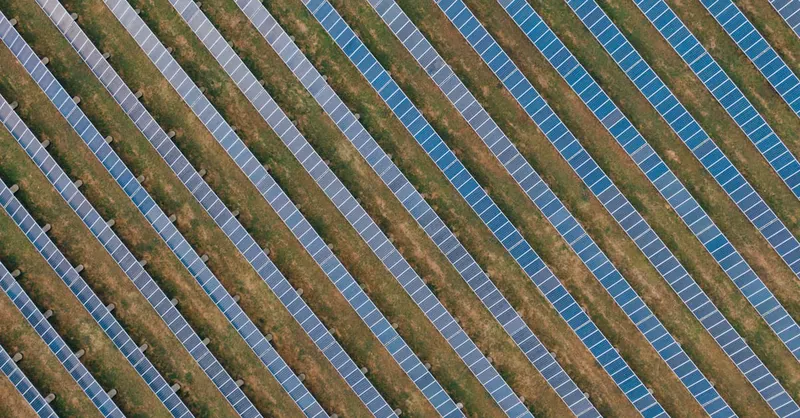
Image courtesy of Kelly
Site Assessment and Solar Resource Analysis
Selecting the ideal location for a solar power plant is a critical foundational step that directly impacts its overall performance, efficiency, and longevity. A thorough site assessment and solar resource analysis enable engineers and project developers to evaluate geographical and environmental conditions, ensuring optimal plant placement and maximizing energy yield.
Geographical Factors
The first evaluation involves understanding the site’s latitude, altitude, and terrain. Latitude influences the sun’s angle and daylight duration, affecting annual solar irradiance levels. Higher altitudes generally provide clearer atmospheric conditions but may increase installation challenges. Terrain should be relatively flat or gently sloped to simplify construction and minimize shading effects or soil erosion risks.
Solar Irradiance Measurement
Accurate solar irradiance data—particularly Global Horizontal Irradiance (GHI) and Direct Normal Irradiance (DNI)—is essential for predicting photovoltaic and concentrated solar power plant outputs. Using meteorological stations, satellite data, and solar radiation databases (e.g., NASA’s SSE or PVGIS), engineers can assess sunlight availability throughout the year. High irradiance correlates with increased electricity generation potential.
Climate and Weather Conditions
Long-term climate data must be analyzed, including:
- Temperature ranges: Extreme heat can reduce PV panel efficiency.
- Humidity and precipitation: Affect panel degradation rates and maintenance needs.
- Wind patterns: Influence structural design requirements for mounting systems and tracking mechanisms.
- Dust and soiling rates: Impact cleaning schedules and overall plant availability.
Shading Analysis
Solar panels are highly sensitive to shading, which drastically reduces energy output and may cause hotspot damage. Detailed shading studies using tools like solar pathfinders, LIDAR scanning, or 3D modeling help identify nearby obstructions such as buildings, trees, or terrain features. Optimal site layouts minimize shading effects during peak sunlight hours.
Land Suitability and Environmental Considerations
Beyond solar access, suitable land must meet regulatory and environmental criteria. Factors include:
- Land use type: Preference for non-arable, non-forested, or degraded lands to reduce ecological impact.
- Soil properties: Stability and drainage affect foundation design and plant durability.
- Accessibility: Proximity to roads and transmission infrastructure reduces transport and interconnection costs.
- Environmental restrictions: Protected habitats, water bodies, and community considerations limit site options.
Conducting integrated site assessment and solar resource analysis provides a robust foundation for designing high-performing solar power plants. By leveraging advanced data and environmental insights, engineers can optimize plant placement to maximize renewable energy generation and ensure sustainable project development.
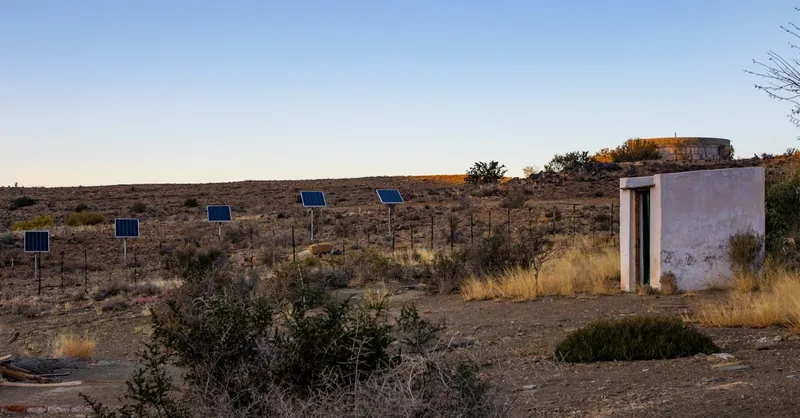
Image courtesy of Magda Ehlers
Key Components of Solar Power Plants
A well-designed solar power plant hinges on an integrated assembly of electrical and mechanical components that work in concert to efficiently convert sunlight into usable electricity. Understanding these key components is essential for both electrical engineers and beginners eager to grasp how modern solar installations achieve optimal performance and reliability.
Photovoltaic (PV) Modules
At the heart of every solar power plant are photovoltaic modules, commonly known as solar panels. These modules consist of interconnected solar cells made from semiconductor materials such as silicon, which absorb sunlight and generate direct current (DC) electricity via the photovoltaic effect. Module efficiency, durability, temperature coefficient, and degradation rates are critical specifications influencing overall plant output and lifespan.
Inverters
Since solar panels produce DC power, inverters are indispensable for converting this DC into alternating current (AC) compatible with the electrical grid or onsite loads. Modern solar plants typically use string inverters, central inverters, or microinverters based on plant size and topology. Inverters also perform maximum power point tracking (MPPT) to optimize energy harvest under variable irradiance and temperature conditions, while providing essential grid-support functionalities such as voltage regulation and fault ride-through capability.
Tracking Systems
To maximize solar capture, many utility-scale plants integrate solar trackers—mechanical systems that orient PV modules toward the sun throughout the day. There are two main types:
- Single-axis trackers rotate panels east to west on one axis, enhancing energy yield by 15–25% compared to fixed-tilt systems.
- Dual-axis trackers adjust tilt and azimuth, optimizing sunlight incidence but with higher complexity and cost.
Trackers improve overall plant performance, particularly in regions with high solar variability.
Combiner Boxes
Combiner boxes serve to consolidate multiple strings of PV module wiring into fewer conductors, streamlining electrical connections and facilitating protection and monitoring. These boxes include fuses or circuit breakers to safeguard against overcurrent, and sometimes house surge protection devices to prevent damage from lightning or electrical surges.
Transformers
Since inverters output AC power often at low voltage levels, transformers step up the voltage to medium or high voltages suitable for efficient grid transmission. Depending on plant size and design, transformers can be pad-mounted near inverter stations or centralized in substations. Proper transformer sizing and cooling are crucial to minimize energy losses and ensure reliable power delivery.
Balance of System (BOS) Equipment
The balance of system (BOS) encompasses all auxiliary components beyond modules, inverters, and transformers that are vital for plant operation and safety. Key BOS elements include:
- Mounting structures: Frames and foundations that secure PV modules withstanding environmental loads.
- Cabling and wiring: DC and AC conductors ensuring safe and efficient power flow.
- Monitoring and control systems: SCADA platforms and sensors enable real-time performance tracking and fault diagnostics.
- Protection equipment: Circuit breakers, relay devices, and grounding systems that maintain electrical safety.
- Cooling systems: In some cases, cooling solutions improve inverter or transformer efficiency.
Each BOS element plays a pivotal role in enhancing the longevity, safety, and maintainability of solar power plants.
By mastering the functions and interrelationships of these critical components—photovoltaic modules, inverters, trackers, combiner boxes, transformers, and balance of system equipment—engineers can design solar power plants that maximize energy production, reduce costs, and integrate seamlessly with the electric grid. This comprehensive understanding is foundational to driving innovation and sustainability in solar energy deployment.
Image courtesy of Kelly
Electrical Design and System Configuration
A robust electrical design and system configuration is the backbone of any solar power plant, directly impacting efficiency, reliability, and grid compatibility. At its core, this involves selecting appropriate system voltage levels, planning optimized wiring layouts, sizing transformers accurately, configuring inverters for maximum energy conversion, and adhering to grid interconnection protocols that ensure safe and stable integration with the electrical network.
System Voltage Levels
Choosing the right system voltage is a critical design decision balancing electrical losses, equipment costs, and safety. Common voltage tiers in utility-scale solar plants include:
- Low Voltage (600-1500 V DC): Most PV modules and strings operate within this range before converting DC to AC. Higher DC voltages minimize current, reducing conductor size and resistive losses but require components rated for elevated voltages.
- Medium Voltage (1 kV to 35 kV AC): After inversion, power is typically stepped up to medium voltage for efficient collection across the plant area. This reduces AC line losses and facilitates scalable wiring layouts.
- High Voltage (69 kV to 500 kV AC): Large solar plants often employ step-up transformers to inject power at high voltage levels compatible with transmission grids, enabling long-distance transport with minimal losses.
Optimizing voltage levels throughout the plant improves operational efficiency and reduces capital expenditure on conductors and equipment.
Wiring Layouts and Electrical Balance
Efficient wiring layouts are essential to minimize power losses, simplify installation, and enhance system maintainability. Design strategies include:
- String and combiner box arrangement: Grouping PV modules into strings that match inverter input specifications ensures maximum power point tracking efficiency.
- Parallel and series connections: Combining strings in series increases voltage, while parallel connections increase current – both must be balanced to avoid hotspots and ensure uniform energy flow.
- Cable sizing: Selecting appropriate conductor sizes based on current ratings, voltage drop limits, and ambient temperature prevents overheating and energy loss.
- Cable routing: Organized cable trays and underground conduits protect wiring from environmental damage and ease future maintenance.
Meticulous electrical balance and thoughtful wiring topology greatly enhance plant reliability and reduce lifecycle costs.
Transformer Sizing and Placement
Transformers are pivotal for voltage step-up and isolation between plant sections and the grid. Key considerations in transformer sizing include:
- Rated capacity: Must accommodate peak plant output plus contingencies for inrush current and fault conditions.
- Voltage ratings: Primary and secondary voltages must match plant output and grid connection standards.
- Cooling type: Options range from dry-type transformers with lower maintenance to oil-immersed units benefiting from superior heat dissipation.
- Placement: Transformers are typically located near inverters (pad-mounted) for localized voltage step-up or centralized in a substation for larger plants.
Proper transformer engineering minimizes losses and ensures operational durability under fluctuating load conditions.
Inverter Configurations
Inverters convert DC solar power to grid-compliant AC and perform crucial functions such as maximum power point tracking (MPPT) and grid support. Popular inverter topologies include:
- String inverters: Modular and scalable units handling multiple PV strings; ideal for distributed layouts.
- Central inverters: Large capacity units centralizing power conversion; beneficial in expansive installations with centralized wiring.
- Microinverters: Installed at the module level, offering granular control and improved performance in partially shaded conditions but at higher initial costs.
Advanced inverters also support grid interconnection requirements like reactive power control, frequency responding, and anti-islanding protection, enhancing the plant’s grid compatibility and resilience.
Grid Interconnection Protocols
Successful integration of solar power plants relies on strict adherence to grid interconnection protocols, which govern safety, power quality, and communication between the plant and utility grid. Critical aspects include:
- Voltage and frequency standards: Ensuring output matches grid codes to prevent disturbances.
- Protection relays: Rapid fault detection and isolation to safeguard equipment and maintain system stability.
- Communication interfaces: Real-time data exchange for monitoring, control, and demand response capabilities.
- Anti-islanding protection: Preventing the solar plant from energizing isolated grid sections during outages, ensuring safety for utility personnel.
Compliance with these protocols is mandatory for grid approval and supports the reliable, seamless delivery of renewable energy.
In summary, mastering the electrical design and system configuration aspects—system voltage optimization, precise wiring layouts, transformer engineering, inverter selection, and stringent grid connection compliance—is indispensable for creating efficient and grid-friendly solar power plants. This engineering rigor not only boosts performance but also ensures long-term operational excellence in modern renewable energy installations.
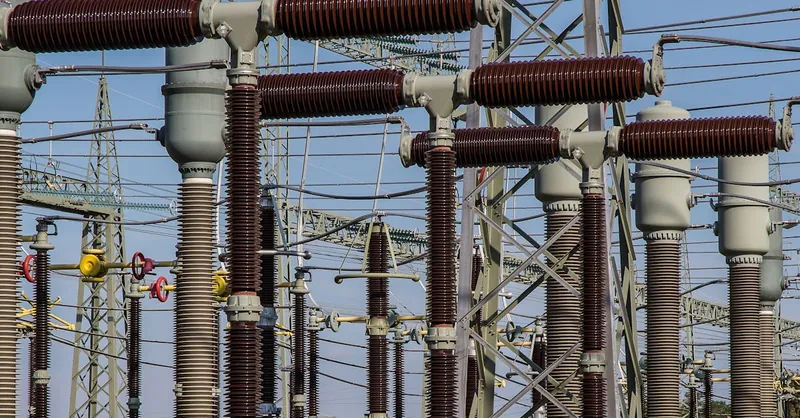
Image courtesy of Pixabay
Energy Yield Estimation and Performance Modeling
Accurately estimating the annual energy yield of a solar power plant is a cornerstone of successful design, financing, and operation. Energy yield estimation involves predicting the expected electricity production over the system’s lifetime while accounting for real-world factors that reduce performance. This process relies on sophisticated performance modeling tools and detailed input data to simulate how the plant converts available solar radiation into usable power under various environmental conditions.
Simulation Tools and Methods
Modern energy yield predictions use software platforms such as PVsyst, SAM (System Advisor Model), and Helioscope, which integrate meteorological datasets, component specifications, and system configurations. These tools model the entire energy generation chain—from solar irradiance capture to AC power delivery—enabling engineers to assess:
- Solar resource variability: Hourly or sub-hourly irradiance profiles adjusted for site-specific atmospheric conditions.
- Module performance: Including temperature coefficients and nominal operating cell temperature (NOCT) effects.
- System losses: Encompassing shading, reflection, mismatch, wiring, inverter efficiency, and transformer losses.
- Operational parameters: Such as tilt angles, tracking strategies, and system downtime.
Accounting for Losses and Degradation
A robust performance model explicitly incorporates multiple loss mechanisms that impact energy output:
- Temperature Effects: PV module efficiency decreases as temperature rises; modeling this effect requires accurate module temperature estimation using ambient temperature, wind speed, and irradiance.
- Soiling Losses: Accumulated dust, dirt, and debris reduce transmittance; region-specific soiling rates and cleaning schedules significantly influence net energy.
- Shading and Mismatch: Partial shading from terrain or nearby objects decreases output; electrical mismatch between modules also causes power reduction.
- System Degradation: Annual capacity degradation—typically around 0.5% to 1% per year—lowers output over the plant’s lifetime.
- Availability and Maintenance: Scheduled and unscheduled downtime affects the effective operational hours.
By integrating these factors, energy yield estimation doesn’t just provide a static snapshot but a dynamic, realistic forecast that informs financial modeling and risk assessment.
Importance for Project Development
Performing comprehensive energy yield simulations empowers developers, engineers, and investors to:
- Optimize design parameters: Such as module selection, tilt, orientation, and tracking to maximize annual generation.
- Predict financial returns: Improving accuracy in power purchase agreements (PPAs) and investment decisions.
- Plan maintenance and operations: Anticipating performance degradation and soiling impacts for proactive scheduling.
- Ensure compliance: Verifying projected output meets regulatory and contractual requirements.
In essence, energy yield estimation and performance modeling serve as critical tools that transform raw solar data and system design into actionable insight, driving efficiency and profitability in modern solar power plant deployment.
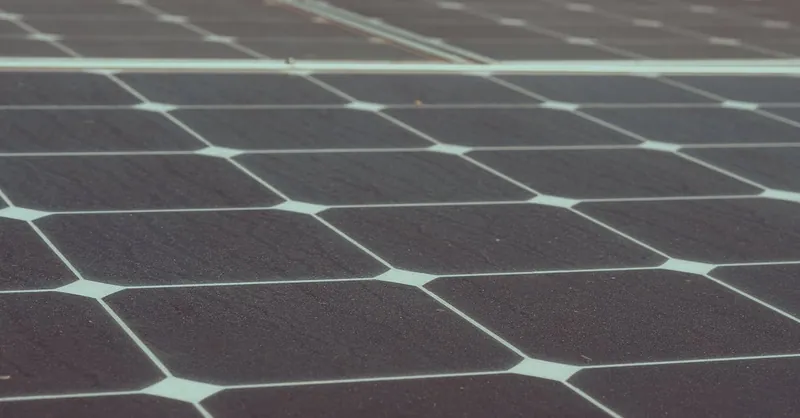
Image courtesy of Kindel Media
Innovations in Solar Plant Design
As solar power technology advances rapidly, innovative design approaches are revolutionizing the efficiency and performance of solar power plants. Pioneering developments such as bifacial solar panels, perovskite solar cells, advanced tracking systems, and integrated energy storage solutions are reshaping how solar energy is captured, converted, and utilized—boosting overall plant yield and grid reliability.
Bifacial Solar Panels
Unlike traditional monofacial panels that capture sunlight only on one side, bifacial solar panels absorb solar radiation on both their front and rear surfaces. This design leverages reflective ground surfaces and diffuse light, enhancing energy generation by typically 5% to 15% depending on site albedo and installation height. Bifacial modules introduce new design considerations, including:
- Optimizing mounting heights and tilt angles to maximize rear-side irradiance.
- Selecting suitable ground reflectance materials such as white gravel or concrete.
- Incorporating advanced modeling tools to accurately estimate bifacial gains during system sizing.
Perovskite Solar Cells
Emerging perovskite photovoltaic technology offers promising breakthroughs in PV efficiency and manufacturing cost reduction. Perovskite cells boast excellent light absorption, tunable bandgaps, and flexibility, enabling potential integration with silicon solar cells in tandem configurations that surpass traditional efficiency limits. Key advantages include:
- High power conversion efficiencies exceeding 25% in lab settings.
- Lightweight, potentially flexible modules that unlock new design possibilities.
- Lower production costs via less energy-intensive fabrication processes.
While still in developmental stages for commercial-scale deployment, perovskite innovations signal a disruptive leap in solar module design.
Advanced Tracking Systems
Innovations in solar tracking technology continue to evolve, moving beyond conventional single- and dual-axis trackers. Modern tracking systems incorporate:
- Intelligent control algorithms: Using real-time meteorological and irradiance data to optimize panel orientation dynamically.
- Lightweight and durable materials: Reducing mechanical stress and maintenance requirements.
- Hybrid tracking solutions: Combining tracking with bifacial modules to maximize energy harvest.
- Integration with IoT and AI: Enabling predictive maintenance and performance optimization.
These advancements can push energy gains beyond 30% compared to fixed-tilt systems, especially in variable climatic regions.
Integrated Energy Storage Solutions
To address solar’s intermittency and enhance grid integration, energy storage systems (ESS) are increasingly incorporated into solar plant designs. Cutting-edge storage technologies combined with solar include:
- Battery energy storage: Lithium-ion, flow batteries, and emerging chemistries storing excess solar generation for dispatch during low irradiance periods or peak demand.
- Thermal energy storage: Particularly coupled with concentrated solar power (CSP) plants for extended dispatchability.
- Hybrid storage configurations: Combining batteries with supercapacitors or flywheels to balance energy and power requirements.
Integrated storage solutions not only enhance solar plant capacity factor and grid reliability but also create revenue opportunities via ancillary services and demand response mechanisms.
By embracing these cutting-edge technologies—bifacial panels, perovskite cells, sophisticated tracking, and energy storage integration—solar power plant designs are becoming more efficient, adaptable, and economically resilient. Staying informed on these innovations empowers electrical engineers and renewable energy enthusiasts alike to deploy next-generation solar systems optimized for performance, sustainability, and future energy demands.
Image courtesy of Kindel Media
Environmental and Regulatory Considerations
Designing a solar power plant goes beyond technical and economic factors—it must also comprehensively address environmental impact assessments, land use regulations, grid compliance standards, and sustainability certifications to achieve responsible and lawful development. These considerations ensure that solar projects minimize ecological disruption, comply with government policies, and contribute positively toward global renewable energy goals.
Environmental Impact Assessments (EIAs)
Before construction, conducting a thorough Environmental Impact Assessment (EIA) is mandatory in most jurisdictions. EIAs systematically evaluate how the solar power plant might affect local ecosystems, wildlife habitats, soil quality, water resources, and nearby communities. Key environmental risks addressed include:
- Habitat disturbance: Identifying sensitive flora and fauna to avoid or mitigate biodiversity loss.
- Land clearing and soil erosion: Implementing erosion control and land rehabilitation strategies.
- Water runoff and quality: Ensuring that construction and operation do not pollute water bodies.
- Noise and dust emissions: Managing construction-related environmental nuisances.
Developers often prepare detailed mitigation plans and monitoring programs to comply with EIAs, helping secure permits and maintain community support.
Land Use Regulations and Permitting
Navigating land use regulations ensures that solar plants are sited on legally permissible areas aligned with local zoning laws and land ownership rights. Important regulatory aspects include:
- Zoning classifications: Confirming compatibility of solar projects with agricultural, industrial, or conservation land use designations.
- Setback requirements: Adhering to minimum distances from roads, residential areas, and protected lands.
- Land lease or purchase agreements: Securing clear titles and negotiating terms that reflect long-term plant operation.
- Cultural and archaeological assessments: Protecting historical sites and respecting indigenous land claims.
Compliance with these regulations streamlines project development and minimizes legal disputes.
Grid Compliance Standards and Interconnection
Solar power plants must meet stringent grid compliance standards to ensure safe, reliable, and stable operation within electrical networks. These standards include:
- Voltage and frequency regulation: Keeping plant output within allowable grid parameters.
- Power quality requirements: Controlling harmonics, flicker, and reactive power to maintain grid health.
- Protection and control systems: Implementing advanced relay protection, anti-islanding, and fault ride-through capabilities.
- Communication protocols: Enabling real-time data exchange with grid operators for system monitoring and demand response.
Adhering to grid codes established by utilities or regulatory bodies is essential to gain interconnection approval and maintain operational licenses.
Sustainability Certifications and Industry Standards
To demonstrate environmental stewardship and enhance project credibility, solar power plants increasingly seek sustainability certifications aligned with international frameworks such as:
- LEED (Leadership in Energy and Environmental Design): Recognizing green building and infrastructure practices.
- IGCC (Investor Confidence Project Certification): Standardizing energy project quality and performance.
- ISO 14001 Environmental Management: Establishing systematic approaches to reduce environmental impact.
- Renewable Energy Certificates (RECs) and Carbon Credits: Facilitating credible renewable energy claims and carbon footprint offsetting.
Achieving these certifications signals commitment to sustainable development, attracting investors, customers, and regulatory favor.
By integrating environmental and regulatory considerations into solar power plant design, engineers and project developers not only safeguard natural resources and comply with legal mandates but also enhance project viability and social acceptance. This holistic approach aligns renewable energy expansion with sustainable development principles, paving the way for resilient and responsible solar infrastructure.
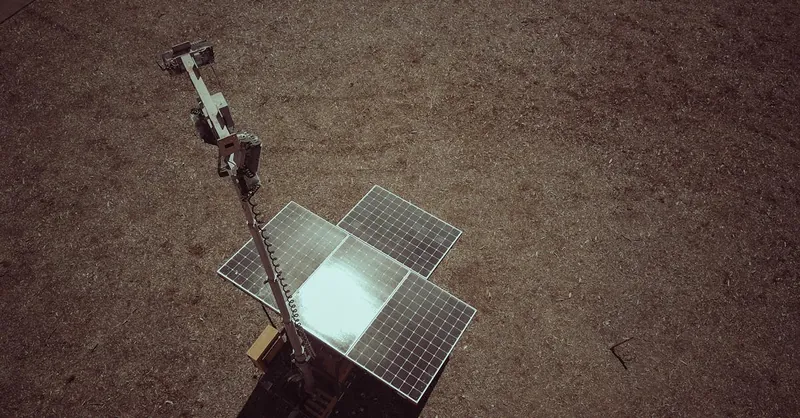
Image courtesy of Kindel Media
Construction, Operation, and Maintenance Best Practices
Ensuring the long-term success and high performance of a solar power plant depends significantly on following proven construction, operation, and maintenance (O&M) best practices. Effective project execution starts with realistic project timelines that carefully phase site preparation, equipment delivery, and installation activities to minimize delays and optimize resource allocation. During the commissioning phase, comprehensive testing and validation of electrical systems, protection schemes, and control interfaces guarantee that the plant meets design specifications and grid interconnection requirements before commercial operation begins.
Once operational, ongoing plant health must be safeguarded through robust condition monitoring and predictive maintenance strategies. Implementing advanced monitoring platforms—integrated SCADA systems and IoT-enabled sensors—enables real-time tracking of key performance indicators such as string voltages, inverter efficiency, and temperature profiles. These data-driven insights empower operators to detect early signs of degradation or faults, preventing costly downtime. Predictive maintenance leverages analytical models and machine learning algorithms to forecast equipment wear and schedule timely interventions, optimizing maintenance costs while extending asset life.
Common operational challenges include soiling losses, module degradation, inverter faults, and tracking system malfunctions. Regular cleaning protocols, performance trend analyses, and quick troubleshooting responses are crucial to mitigate these issues. Additionally, maintaining accurate documentation, adhering to safety standards, and fostering skilled O&M teams ensure sustained plant reliability and high energy yield throughout the project lifecycle. By integrating these best practices, solar power plants can achieve optimal performance, minimize operational risks, and maximize return on investment.
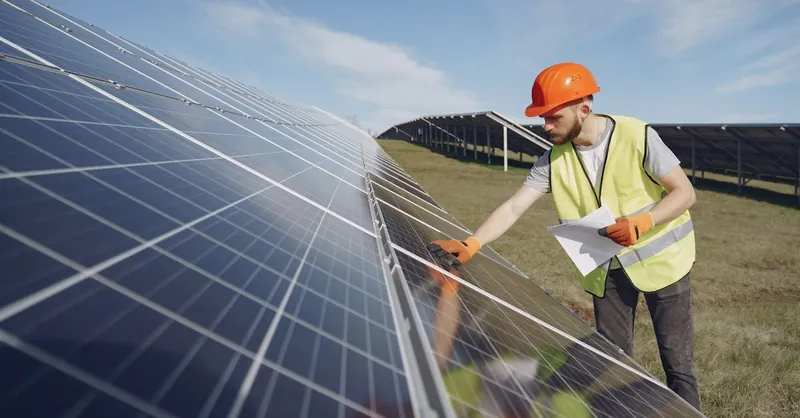
Image courtesy of Gustavo Fring
